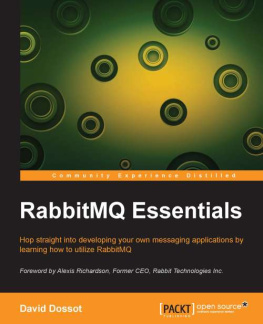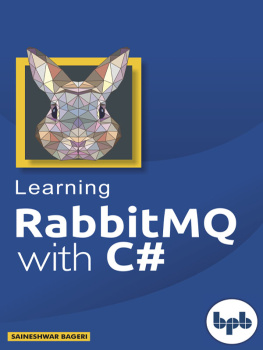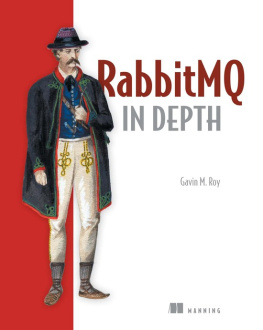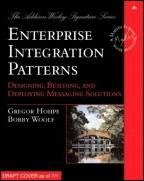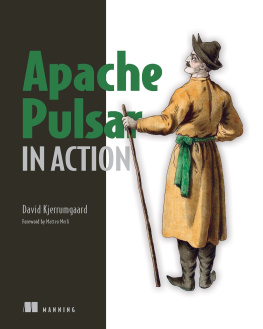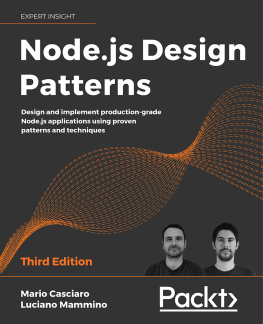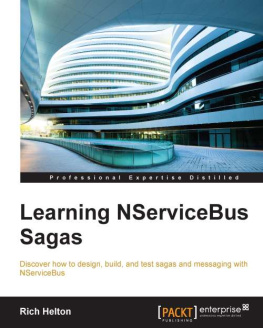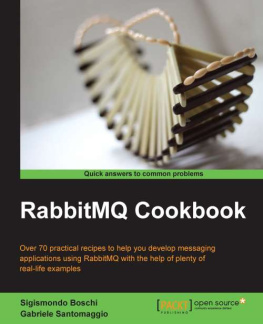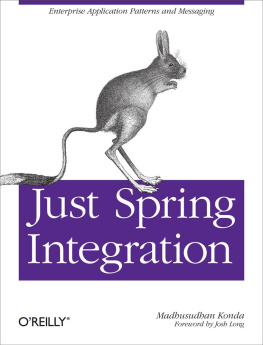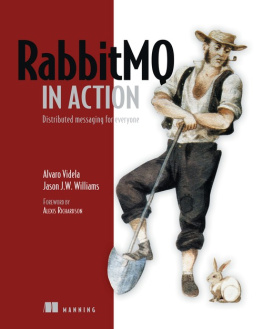Dossot - RabbitMQ Essentials
Here you can read online Dossot - RabbitMQ Essentials full text of the book (entire story) in english for free. Download pdf and epub, get meaning, cover and reviews about this ebook. year: 2014, publisher: Packt Publishing, genre: Computer. Description of the work, (preface) as well as reviews are available. Best literature library LitArk.com created for fans of good reading and offers a wide selection of genres:
Romance novel
Science fiction
Adventure
Detective
Science
History
Home and family
Prose
Art
Politics
Computer
Non-fiction
Religion
Business
Children
Humor
Choose a favorite category and find really read worthwhile books. Enjoy immersion in the world of imagination, feel the emotions of the characters or learn something new for yourself, make an fascinating discovery.
RabbitMQ Essentials: summary, description and annotation
We offer to read an annotation, description, summary or preface (depends on what the author of the book "RabbitMQ Essentials" wrote himself). If you haven't found the necessary information about the book — write in the comments, we will try to find it.
- Refresh your knowledge of the basics of message-orientated architecture and witness how powerful RabbitMQ can be when building your messaging applications
- Discover the strategies behind increasing the scalability and fault tolerance of your applications
- Gain a deep and practical understanding of RabbitMQ through the journey of Clever Coney Media, a fictitious company with real-world problems
Whether you are someone who develops enterprise messaging products professionally or a hobbyist who is already familiar with open source Message Queuing software and you are looking for a new challenge, then this is the book for you. Although you should be familiar with Java, Ruby, and Python to get the most out of the examples, this book will give you the push you need to get started, which no other RabbitMQ tutorial can provide you with.
What You Will Learn- Familiarize yourself with the basics of RabbitMQ to start building your own messaging applications
- Get to know how Clever Coney Media implemented RabbitMQ to improve the development of applications
- Publish, receive, and reject messages
- Route messages by using direct, topic, fanout, and header exchanges
- Create your own application inbox and public address system using Java and Ruby
- Analyze the traffic of your applications using a Python client
- Solve any emergencies using an eviction strategy, smart message routing, clustering, and federation
- Monitor the health of your application by learning how to track it
RabbitMQ is above all other forms of message queuing software thanks to its loosely coupled architecture and its ability to bind multiple languages, making modern web applications secure, scalable, and simple to maintain.
Armed with this supportive guide, you now have the opportunity to get stuck into developing your own message-based applications immediately with RabbitMQ. Using the fictitious Clever Coney Media as a case study, you will follow their journey of developing with RabbitMQ, from implementing simple, synchronous get operations to using advanced message routing and tracking the messaging application. With RabbitMQ Essentials, you will observe how using message queuing software can streamline the development of your own distributed and scalable applications.
Dossot: author's other books
Who wrote RabbitMQ Essentials? Find out the surname, the name of the author of the book and a list of all author's works by series.

